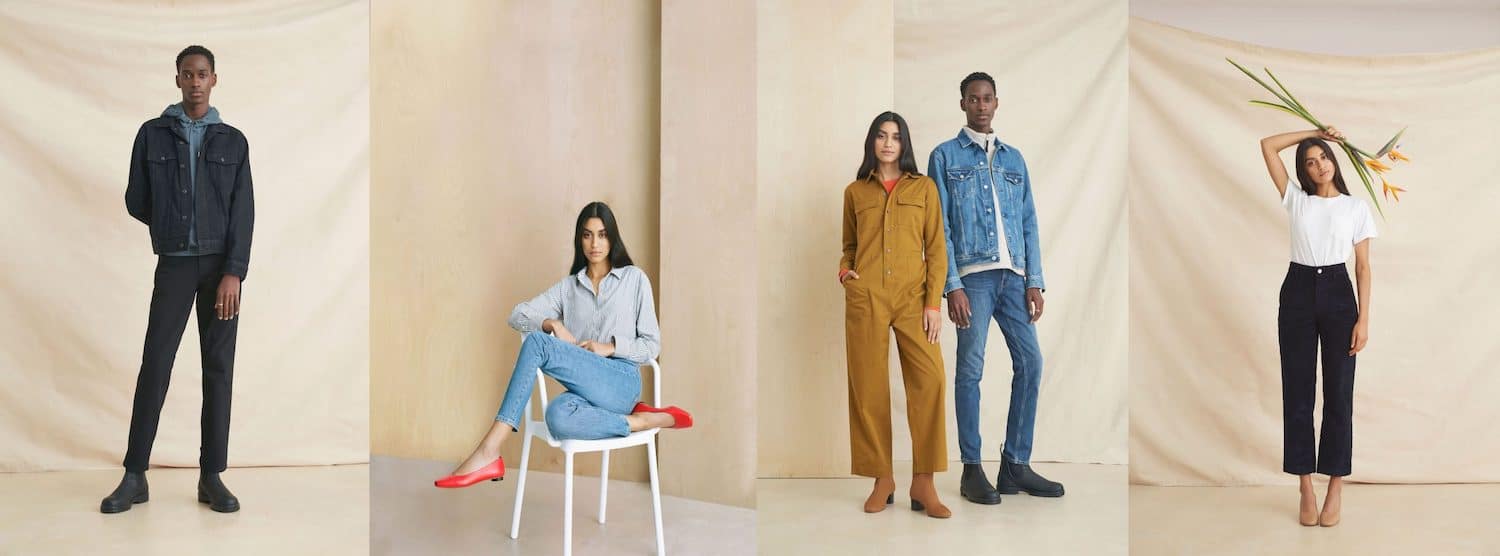
UPDATE: We re-evaluate brands regularly, and we re-evaluated Everlane on 2/21/25. They now earn a passing score and you can see their updated rating here. If you’d like to see their old sustainability rating, originally from 2019, keep reading…
Call it Sustainable or Call it Greenwashing
The sustainable clothing space is large and full of new brands popping up every single month. While the trend towards sustainability is overwhelmingly positive, how are you supposed to look at hundreds of brands and be able tell a sustainable one from one that’s greenwashing?
Greenwashing refers to the act of brands claiming to be sustainable so you’ll buy from them, when in reality they’re doing little to nothing to be more sustainable. The perfect example is H&M, who recently got called out by the Norwegian Consumer Authority, asking what’s actually conscious about their Conscious line?
When it comes to finding sustainable brands, most people start with Google. There you’ll quickly find 800 blog articles featuring brands you know are sustainable, like Patagonia, and brands you’re not quite sure about, like Matt & Nat, DSTLD, and yes, Everlane.
Many of these articles are surely written with the best of intentions, but also with no clear basis on which to determine if a brand is sustainable. That’s why we’re going to share our findings on some of the brands that are being called sustainable when the evidence tells a different story.
Let’s start with a brand you’ve likely heard of: Everlane.
What is Everlane?
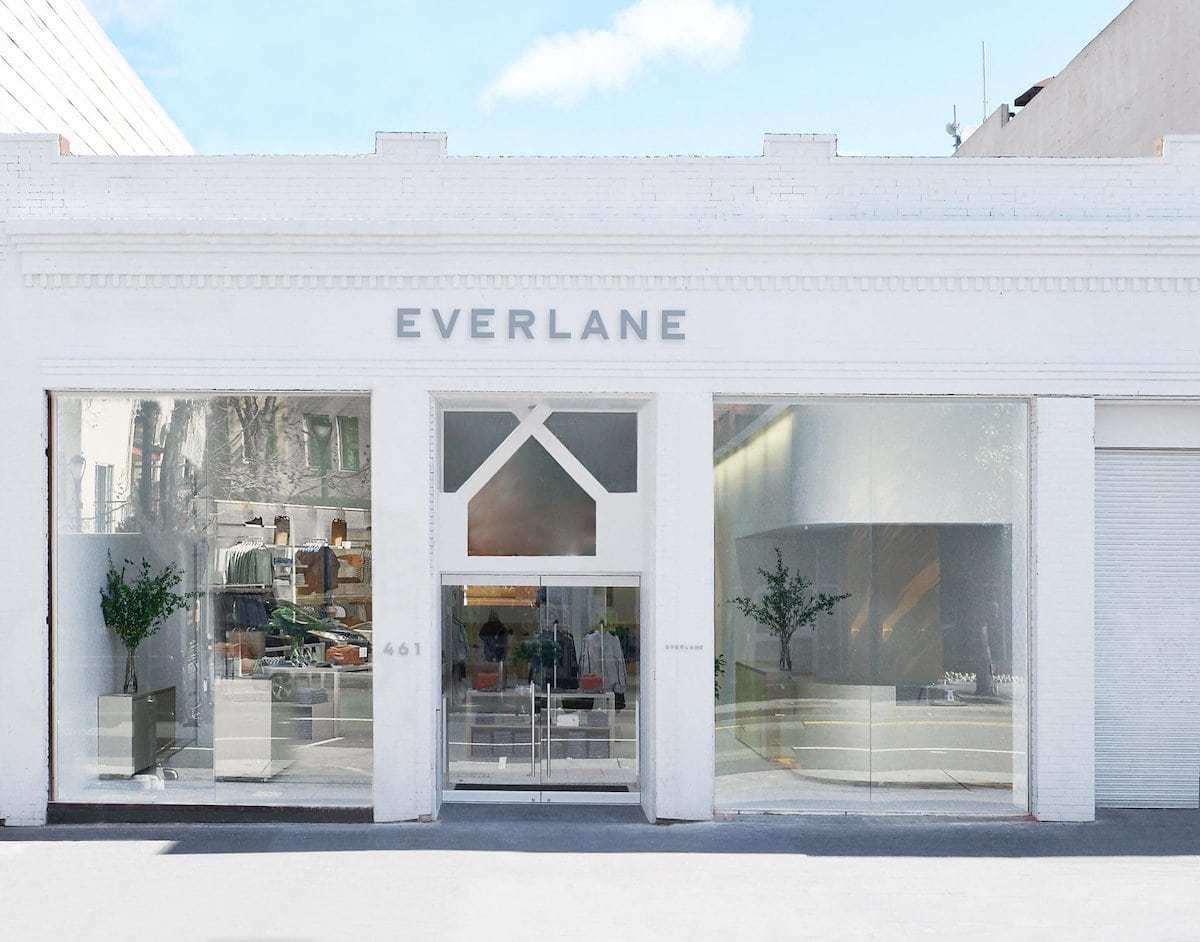
Everlane is a San Francisco based clothing brand founded in 2010.
You might know them because like Allbirds, they took silicon valley fashion by storm. It’s impossible to visit Apple, Facebook, or Google’s offices without seeing people clad in Everlane gear.
In addition to their slick minimalist aesthetic, they quickly grew in part because of their call for radical transparency. But are they a sustainable brand?
Everlane Ethical Rating: How They Stacked Up
Using our sustainable brand criteria, Everlane scored 30 points out of a possible 100, and that is failing!
In order for a brand to pass this criteria they need to score 50 or above. Let’s dig in to Everlane’s results.
Everlane’s Transparency Rating

On transparency/traceability Everlane scored a 10 out of 15 possible points. Not bad.
This means that from their website you can find some information on their manufacturing facilities such as the locations and the number of workers employed. However, there’s also some key information missing such as transparency on wages paid to workers, as well as information on their raw material sources.
Everlane claims radical transparency, and compared to many fashion brands the fact that they share pictures, locations, number of workers, and more is a step in the right direction. Plus the price transparency helps you know you’re paying fair prices for your clothes.
Additionally, they have a decent code of conduct and they share that too. This helps to ensure no slave labor, child labor, and fair working conditions.
Is Everlane Ethical? Maker Well-Being Rating
On Maker Well-Being Everlane scored a 15 out of 33 points.
To break this down, they have their own code of conduct that is comparable to FLA standards. Ok, well that’s good and they also invest in maker well-being programs.
However, where they are lacking is any certification or other evidence that they pay living wages. They have no Fair Trade certification, no GOTS, no SA8000, etc.
Living wages matter because many countries lack sufficient minimum wages or the labor unions to protect workers interests.
Everlane’s Environmental Sustainability Rating
On environmental sustainability Everlane scored a 5 out of 33 possible points.
They clearly do some things right on this front. For example, look at how they make their jeans at one of the most sustainable denim factories in the world, Saitex.
However, this category is about more than one product. Everlane has a large and diverse product range, so scoring well on sustainability means doing well overall, not just on their jeans, and overall they are lacking.
Most of their products offer no explanation for how or why they’re more sustainable than any other clothing product on the market.
Everlane’s Sustainable Fabrics Rating
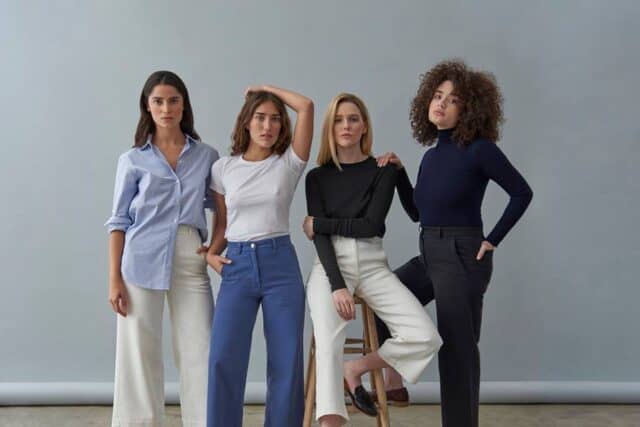
On sustainable fabrics Everlane scored a 0 out of 14 points.
While most of the brands that pass our criteria use organic cotton as a bare minimum, many go above and beyond with recycled fabrics, upcycled fabrics, hemp, linen, and Tencel. Everlane on the other hand makes virtually no effort on sustainable fabrics across their large and diverse product range.
Everlane’s Leadership Rating
On leadership Everlane scored 0 out of 5.
Compared to the competition, brands we approve such as Nudie Jeans are pushing the envelope with free repairs for life, and Adelante Made-to-Order is paving the way on living wages.
With Everlane there’s unfortunately nothing that stands out. Their slogan about radical transparency ultimately falls a bit flat.
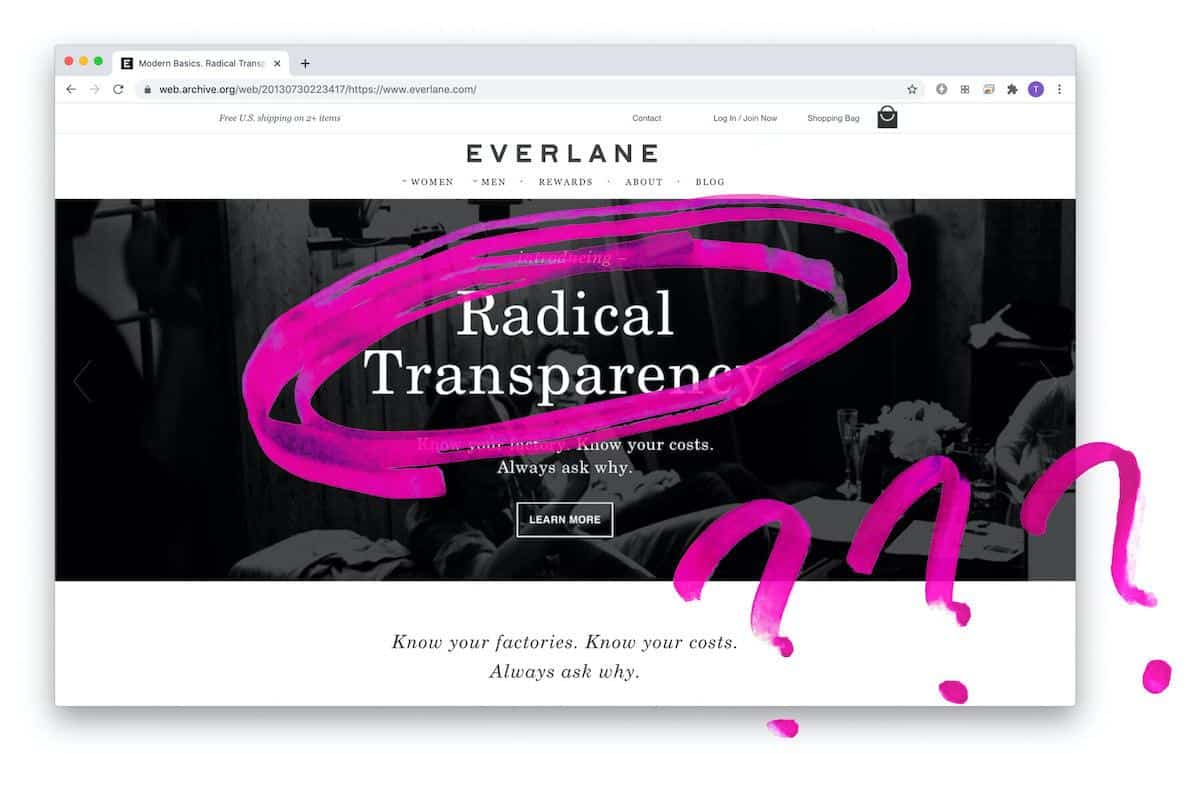
Overall Rating – How Ethical is Everlane?
Add up all the points from Transparency, Maker Well-being, Environmental Sustainability, Raw Materials, and Leadership and you get 30 out of 100 points.
Everlane fails our sustainable brand test, for now.
These rankings aren’t permanent, and while Eco-Stylist doesn’t currently recommend Everlane as a sustainable brand, we hope to see the day when that changes.
The Ethical Brand Criteria
Our sustainable brand criteria takes a holistic and comprehensive approach to sustainability. It answers questions like does the brand pay living wages, do workers have safe conditions free from modern slavery or sexual harassment, is the brand using sustainable fabrics, and how green is their manufacturing?
As mentioned, the criteria works on a point system where brands need at least 50 out of 100 to pass.
Looking for Sustainable Brands?
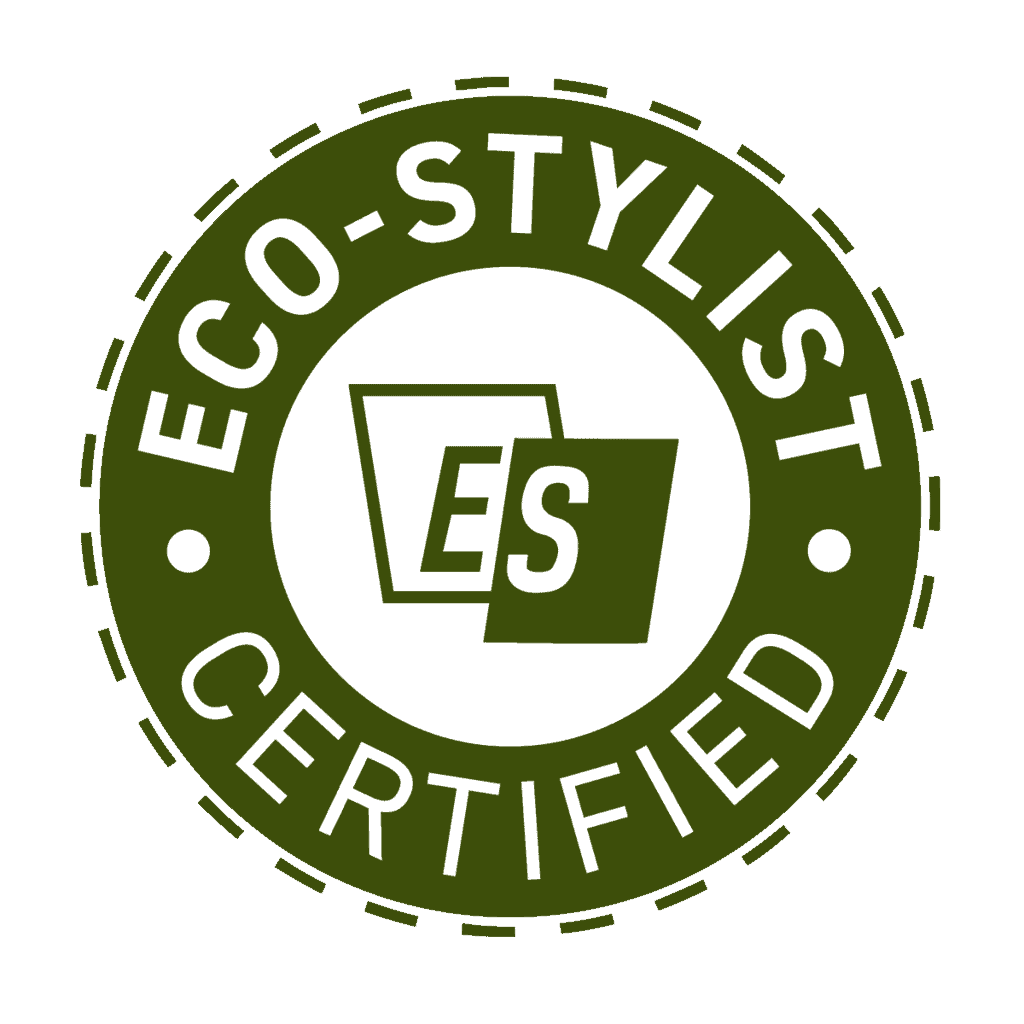
Check out our list of 90+ brands that are doing things like using Fair Trade certified factories, expanding their use of sustainable fabrics, incorporating upcycling, starting circular initiatives, and paying living wages.
A Path for a More Sustainable Future
If you want brands to be more sustainable it is important to hold them to a high standard. As the saying goes, if you don’t stand for something, you’ll fall for anything.
There are already a number of brands leading in the ethical fashion space. Outerknown, Colorful Standard, and Outland Denim are a few examples of brands that are proving sustainability can mean great style, long-lasting clothes, fair wages, worker well-being, and practices that are better for the environment.
Everlane is still putting forth some good efforts and notably transparent information. Their clean aesthetic, transparent pricing, that they purchase carbon offsets for their Tread sneakers, and that they make their jeans in a factory that recycles all of the water used in production, all bode well for them as a brand.
With some stronger commitments to living wages, worker well-being, and sustainable fabrics they could hit the 50 points needed to pass our sustainable brand criteria. That’s a day worth looking forward to!
Ethical Alternatives to Everlane

Like Everlane’s style? Check out 10 Ethical Alternatives to Everlane.
Looking for more Brands to Avoid?
Check out our deep dive brand ratings of other popular brands including H&M, Zara, SHEIN, Allbirds, and more.
Are you surprised by these findings? What values matter the most to you when looking for sustainable brands?
*Article updated 7/15/21

Garik Himebaugh is the founder of Eco-Stylist, the go-to resource to find ethical clothing. He’s also a sustainable personal stylist and international speaker on all things sustainable fashion. Garik loves coffee, climbing, and clothes.










7 thoughts on “How Ethical is Everlane? | Everlane Ethical Rating”
Certainly disappointing. Thank you for the information and the link to the criteria, I will definitely keep it in mind. I’m starting my own brand and trying my best to be sustainable and ethical which is much harder since I make formal wear. Currently, there are far more options for sustainable and ethical fabrics in the casual and active wear market which makes it even more disappointing that Everlane is falling short on this front, they really have no excuse because the materials are available and they have buying power which start ups like me don’t have. I spend countless hours researching materials, ordering swatches and sample yardage, trying them out to see if they can fit into my collection etc and I’m guessing they can afford at least one person full time for that. I do all of it myself and I’m able to incorporate Tencel, Ramie, organic cotton, Bamboo rayon and a Peace silk/organic cotton blend into my work and I’m using Bemberg Cupro lining exclusively. I also produce my garments myself and have recently had a bit of help that I oversee myself. My starting wage is $15/hour and I will incorporate profit sharing into my business once it’s up and running. I also don’t over produce and most of my items are made to order so there is no waste and I will never burn excess product like Burberry which is just shameful….Consumers these days want to know what they are buying and I applaud that so if a company isn’t all the way there with these goals I say be honest and say ” I want this kind of material which is better, can you help me find it? If so I will replace my current materials and improve my collection” that’s what I’m going to do…
Michelle, I’m very excited for the launch of your brand! There are, as you said, much less formal options in the space so very exciting stuff. Really appreciate the extra work you’re putting in to build a sustainable brand. I love the last point you made about just being honest. I think consumers would appreciate that. We need more honesty + transparency.
For smarter menswear there’s us – Arthur & Henry. We started precisely because there were no smart shirts to wear with suits, or less formal but still smart outfits.
http://www.arthurandhenry.com
Since fashion seasonality is the mother of programmed obsolescence that leads to fashion consumerism, regardless how sustainable its products production is, how is that accounted for at your criteria?
Which criteria deals with the consequences of Jevons’ paradox on fashion industry?
Couldn’t find a criteria to measure the sales volume impact on environment.
José, interesting points of discussion. Indeed fashion seasonality is a huge problem as it relates to waste and resource consumption. Fast fashion brands like H&M and Zara have been part of an engine that changed fashion seasonality from 2 seasons to 4 seasons to 52 seasons (where we are today).
However, this is also where it is critical to make distinctions between brands within fashion. Fast fashion works on a low price, low margin, high volume business model. To do this they focus on trends and mass consumption.
Sustainable fashion is focused on higher quality, timeless pieces, and with higher prices. With this business model brands don’t need to sell as much to be financially viable, and they recognize that trends and seasonality are inherently not sustainable. Sustainable brands are manufacturing in ways that are more resource efficient, and also moving away from the rapid and unhealthy rate of consumption that exists today.
In order to distinguish between fast fashion brands and sustainable brands some kind of criteria is necessary, and that is where our criteria comes in. The leadership section of the criteria does account for whether brands are promoting less consumption, even as it impacts their profits. It may not perfectly address all of the question you bring up, but none of the brands we approve work on a fast fashion business model with weekly seasons.
Jevons paradox is a perfect example of how as brands like H&M learned how to produce clothes more efficiently, they lowered prices and demand went up, the result being depleting even more resources. Absolutely right. But this is purely manufacturing efficiency, regardless of environmental efficiency or sustainability. The process of producing more sustainably in conjunction with moving away from trends and towards timeless pieces, together will address the questions brought up by Jevons paradox.
The fashion industry as a whole has big issues. What solutions do you advocate for the current issues in the fashion industry?
What does GOTS have to do with fair living wages? If anyone GOTS certified would be paying living wages to the workers, that would great. But those things have nothing to do with each other. And for the record, H&M was questioned by the Norwegian Consumer Authority because they didn’t put enough information on the garment. Not because they had anything to hide or were trying to mislead anyone.
Hey Anna, thanks for taking the time to write us and great questions! GOTS is surprisingly more comprehensive than it is commonly believed. While it’s tended to be looked at as a checkbox for whether the content is organic or not, it actually certifies for a lot more (environmental, social, even eco-friendly packaging). Scroll down to the section labeled Social Criteria for more details:
https://www.global-standard.org/the-standard/general-description.html
We agree with you on the reasoning behind H&M being questioned and fully support the Norwegian Consumer Authority is calling them out and asking the question. “Sustainable” isn’t a regulated term so brands often throw it around with no supporting evidence, which is why if they are doing things sustainably it is critical that they are transparent about it. While H&M’s motives may not always be clear their actions have not exactly built trust from consumers when it comes to being sustainable. For example, when they launched their Billie Eilish collection they claimed in a press release that it was “fully sustainable” and then when people started asking questions they hid the press release. This sort of behavior is very suspicious at best:
https://www.eco-stylist.com/greenwashing-alert-hm-and-billie-eilish-collaboration/
We research every brand on our platform with Remake’s criteria in order to give a clear definition to what defines a sustainable brand, and to hold ourselves accountable to a clearly defined and transparent process. Let me know if you have any more questions.
All the best,
Garik